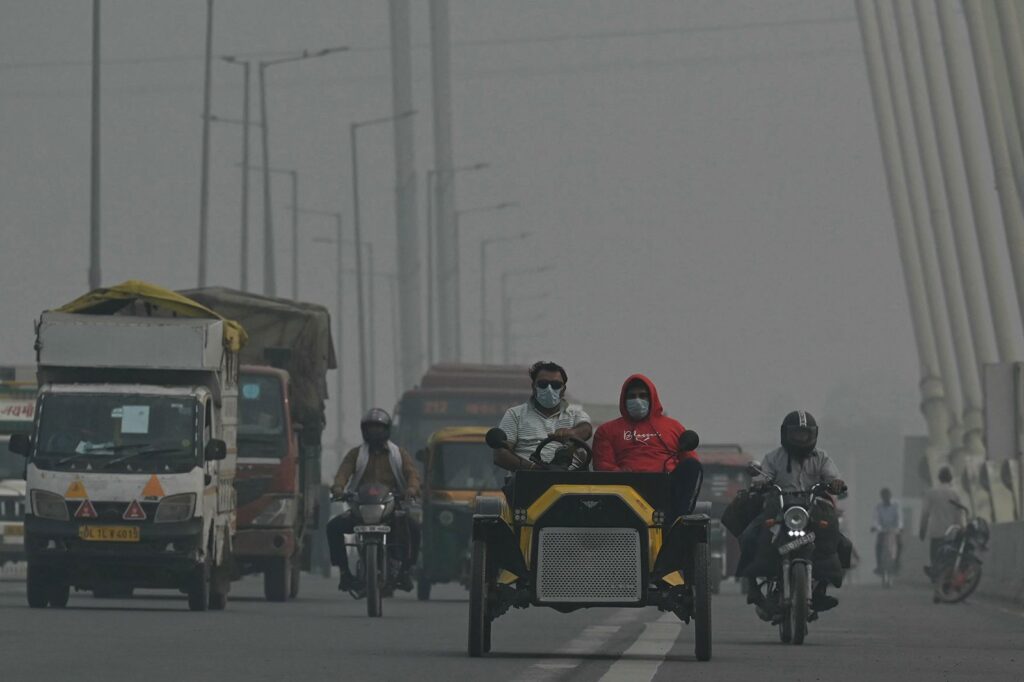
Toxic grey smog has enveloped parts of Pakistan and India, leading to the closure of schools and outdoor activities due to severe health concerns. In Lahore, Pakistan, and Delhi, India, concentrations of harmful PM2.5 particles have reached alarming levels, several times higher than the recommended daily maximum. The crisis has prompted a four-day closure of schools, markets, and parks in Lahore, with residents reporting respiratory problems and advised to wear masks and stay indoors. In Delhi, the world’s most polluted city, schools have been shut down until November 18 to mitigate the impact of the hazardous air quality.
The public health crisis caused by the toxic smog has persisted for decades in the region, contributing to thousands of premature deaths. In Lahore, the concentration of PM2.5 particles, capable of entering the bloodstream, approached hazardous levels at 450. Similarly, Delhi’s PM2.5 levels were almost 35 times the daily maximum recommended by the World Health Organization. Experts attribute this pollution to the burning of crop residue at the beginning of the winter wheat-planting season, despite efforts to encourage alternative methods and threats of punitive action for defying burning bans.
The burning of crop residue, a common practice among farmers, is a major contributor to the smog crisis. In Delhi, this practice typically accounts for 30 to 40 percent of the pollution during October and November. The resulting smoke exacerbates respiratory problems, and the smog peaks from October to February when colder air traps pollution. Residents are advised to wear face masks continuously when outdoors during this period. Despite these challenges, the burning of crop residue continues, and the situation is expected to worsen over the next two months, heightening concerns about air quality and public health.
